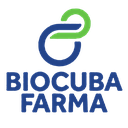Executive Secretary

9th International Scientific Conference on Agricultural Development and Sustainability
AGROCENTRO 2023
16th Symposium of Plant Protection

Abstract
Problematic: Currently, sugarcane cultivars with adequate behavior against the main pests that attack the crop are needed.
Objective: to evaluate the reaction of 12 promising sugarcane clones against smut disease.
Methodology: a study was carried out in the area of state resistance tests located in the Sugar Cane Research Institute of Camagüey. Known and stable reaction patterns were used against this pathology, considered as controls. The variables analyzed were the number of stems affected, percentage of affectation and severity. The evaluations were carried out in the crop cycles of cane plant and first ratoon from the month of planting and harvest during a period of seven months. With the percentages of affectation of the patterns, a regression line was adjusted to distinguish the effect of the environment and obtain the true reaction of the cultivars when assuming optimal conditions for the development of the disease. Variance analysis, Tukey's test and cluster analysis were performed to check the differences between cultivars and define their reaction to the disease using the statistical packages SPSS and STATGRAPHICS Plus.
Results and discussion: The results showed that the largest number of clones presented acceptable behavior before the Sugarcane smut.
Conclusions: The most affected clones turned out to be C12-359, C12-368 and C12-362, but without reaching the susceptible categories. Only the susceptible patterns Co213 and B42231 were manifested at this level.
Resumen
Problemática: actualmente se necesitan cultivares de caña de azúcar con adecuado comportamiento frente a las principales plagas que atacan al cultivo.
Objetivo: evaluar la reacción de 12 clones promisorios de caña de azúcar frente a la enfermedad del carbón.
Metodología: se realizó un estudio en el área de pruebas estatales de resistencia localizada en el Instituto de Investigaciones de la Caña de Azúcar de Camagüey. Se utilizaron patrones de reacción conocida y estable frente a esta patología, considerados como testigos. Las variables analizadas fueron cantidad de tallos afectados, porcentaje de afectación y de severidad. Las evaluaciones se realizaron en los ciclos de cosechas de caña planta y primer retoño a partir del mes de plantado y de cosecha durante un período de siete meses. Con los porcentajes de afectación de los patrones se ajustó una línea de regresión para distinguir el efecto del ambiente y obtener la verdadera reacción de los cultivares al presumir condiciones óptimas para el desarrollo de la enfermedad. Se realizaron análisis de varianza, test de Tukey y análisis de conglomerado para comprobar las diferencias existentes entre los cultivares y definir su reacción ante la enfermedad con el uso de los paquetes estadísticos SPSS y STATGRAPHICS Plus.
Resultados y discusión: Los resultados aportaron que el mayor número de clones presentaron aceptable comportamiento ante el Carbón de la Caña de Azúcar.
Conclusiones: Los clones más afectados resultaron ser C12-359, C12-368 y C12-362, pero sin llegar a las categorías de susceptibles. Solo se manifestaron en este nivel los patrones susceptibles Co213 y B42231.
About The Speaker

Dr.C. Joaquín Montalván Delgado

Investigador Titular INICA Camagüey. Profesor Titular Universidad de Camagüey Ignacio Agramonte
Discussion

